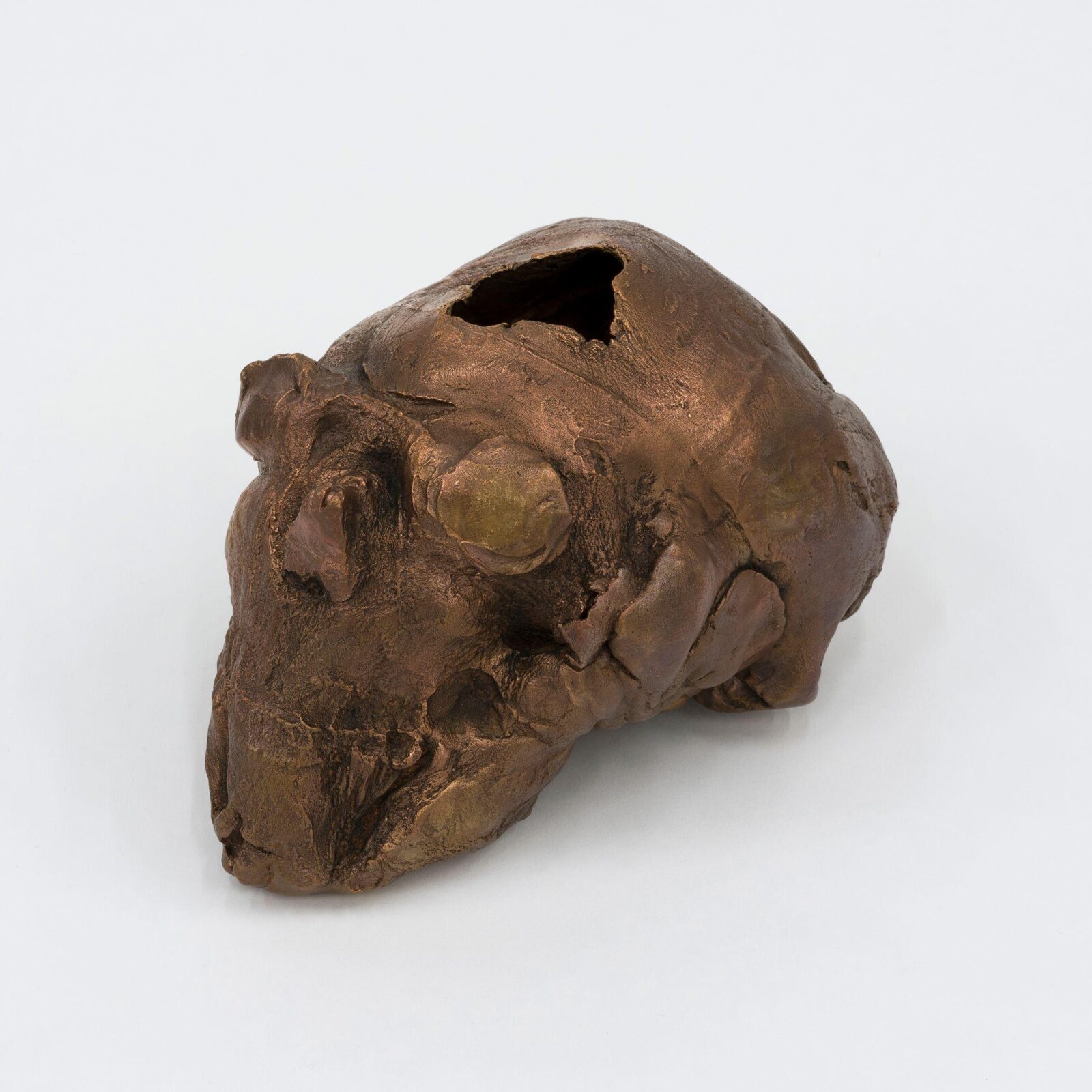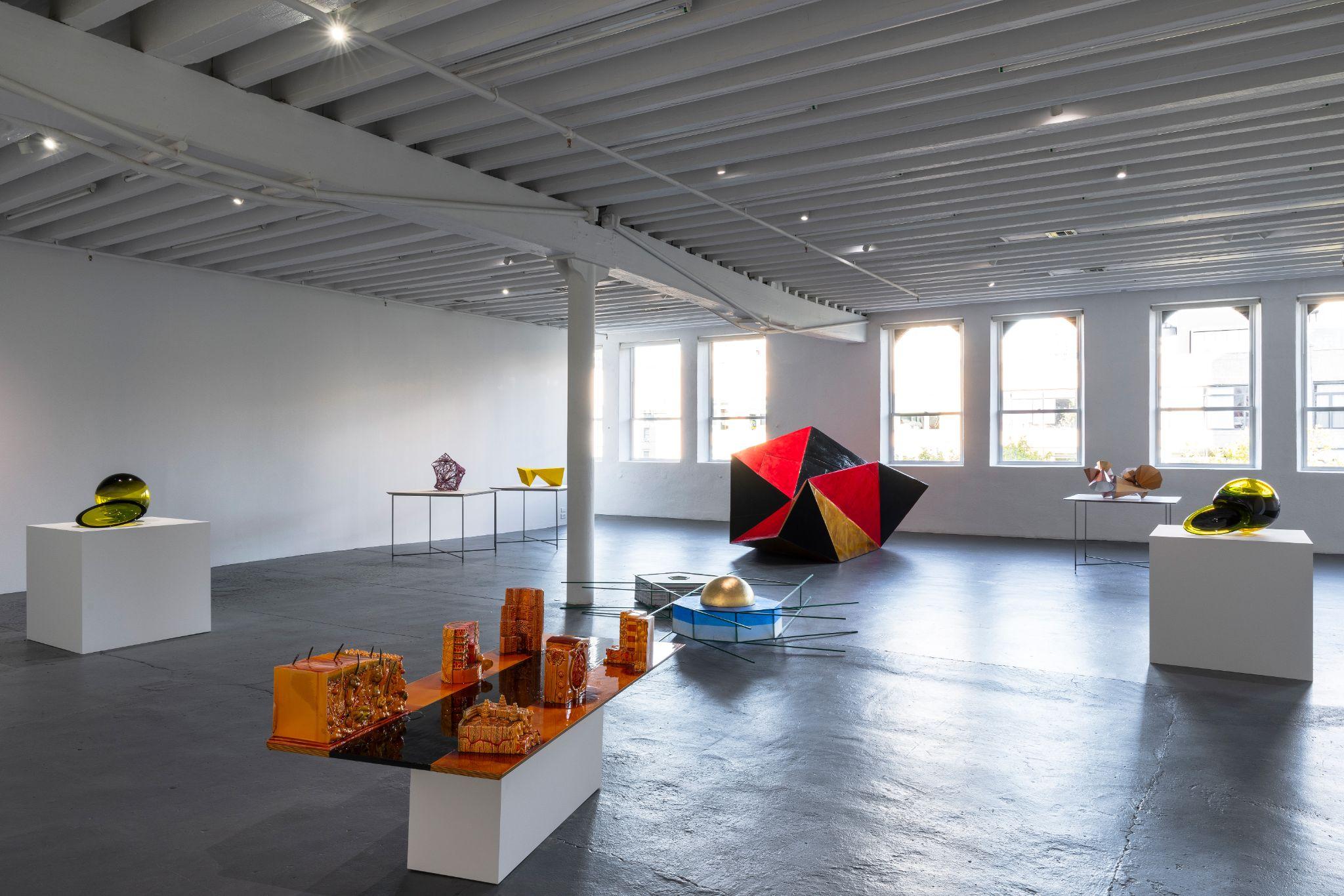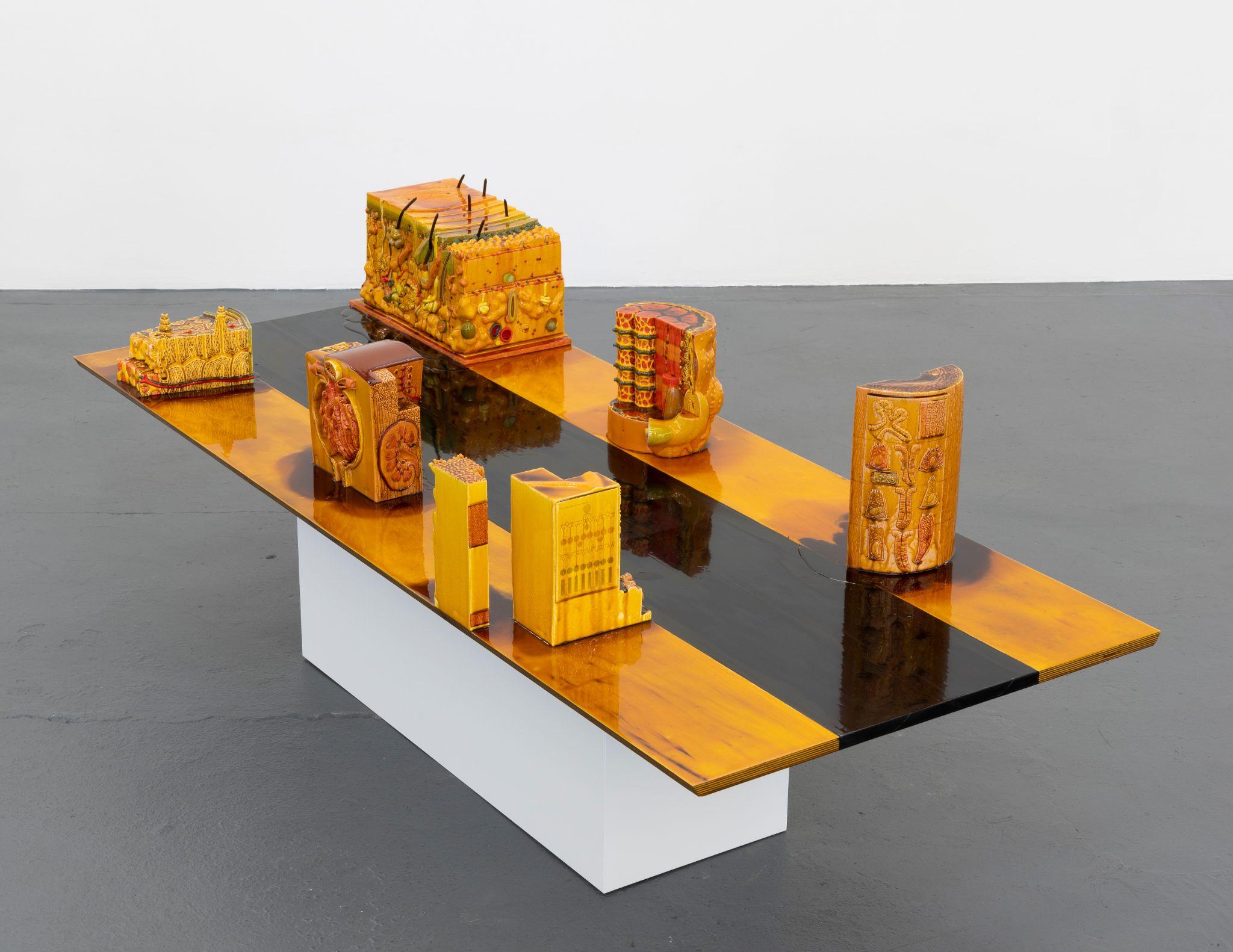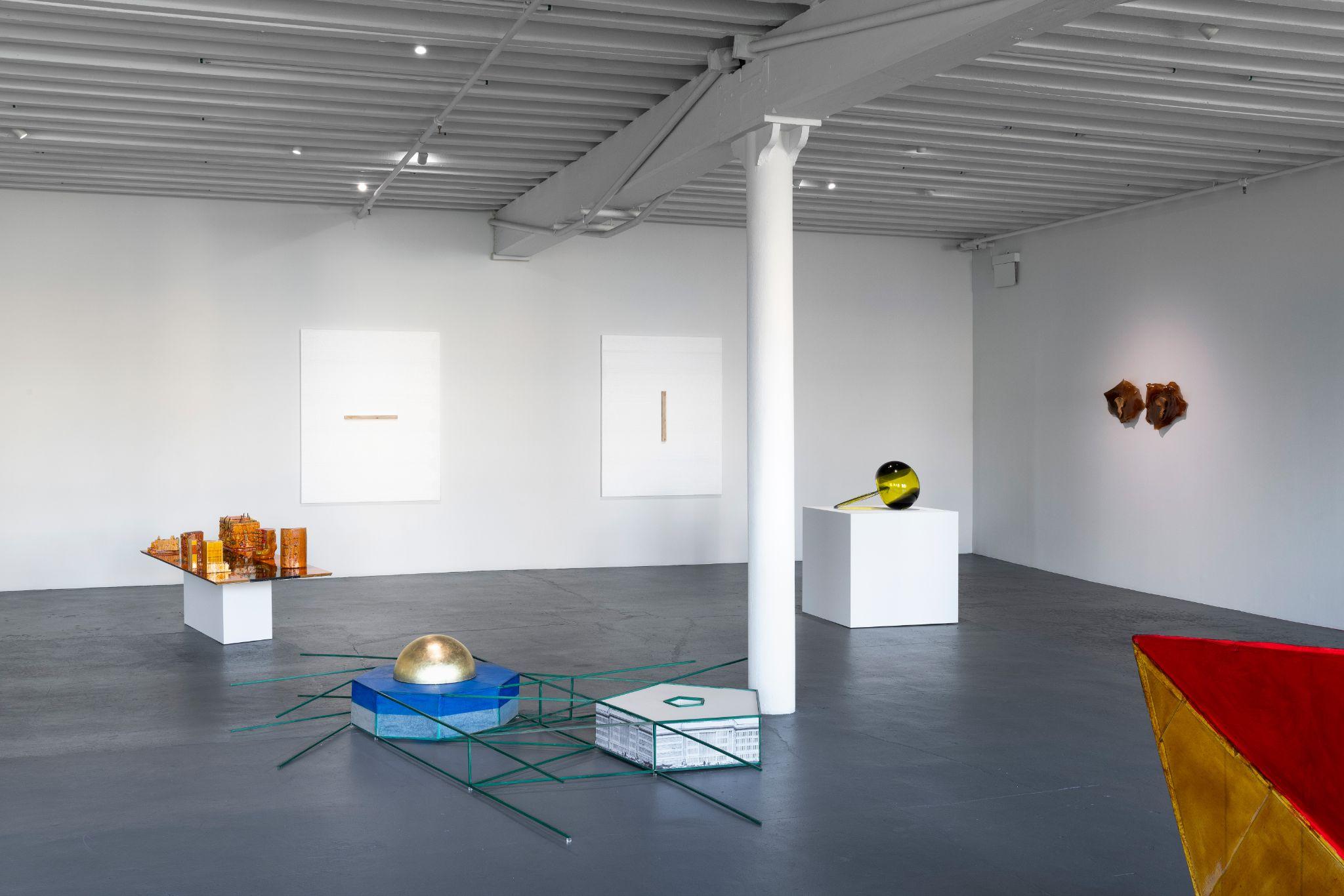Jean-Luc Moulène: Sculptures of Thought


Jean-Luc Moulène’s exhibition at Miguel Abreu Gallery arrives as a lucid assertion of the enduring centrality and vivacity of thought in contemporary art and sculpture after conceptualism. Fashioned from materials as varied as glass, cardboard, bones, bone glue, and bronze—evoking the biological, the industrial, the aesthetic, or the everyday—these new sculptural works mobilize these familiar registers of materiality by probing the plasticity, relationality, and semiotics of form. Taken together, they delineate a critical space between sculpture as thing-in-the-world and sculpture as mental construct, where the sensuous and the conceptual are held in continuous negotiation, resisting the closure of matter and form into fixed meaning.

The more figurative sculptures at the beginning of the exhibition turn to the body as both image and infrastructure, a site where the biological and the political entangle. In Ecorché aux yeux vairons (2024), the uncannily expressionless head—made from casting an inverted latex mask whose orifices are sewn shut—transforms the face into a mass of muteness and opacity. PiTech X (2025) and PiTech Y (2025) apply an opposite yet parallel technique of inversion to the skull: by pressing a layer of clay around a medical skull and then tearing it off to reverse its imprint, Moulène transforms voids into protrusions and crumbles the firmness of the bone. In these processes, interior and exterior exchange roles while image and structure collapse into each other. Undermined and destabilized, the body is turned against itself to reason through its own deformation.

In Bio St (2025), this deconstruction of the body is literalized as medical blocks of anatomy are transposed onto an urban grid, where organs stand in for buildings and units of organization. If the Écorché and PiTech works unravel the body through inversion, Bio St carries this process outward, projecting the internal order of the body into the spatial network of the social. For Moulène, the body is indeed both matter and representation—a system of control as much as it is subject to control. Visualizing and intensifying these tensions, Moulène lays the body out as a bare field where new potentialities can now be conceived.
From the anatomical to the architectural and geometric, the back room of the gallery develops this language of organization into a more formal and spatial one. In Octo-Pentagone (2025), Moulène superimposes two forms—the Pentagon and the Al-Aqsa Mosque—until their shapes interlock on an abstract plane with extending ruling lines. The work thus recasts sculpture as a cognitive site, where multiple orders of opposition—the spiritual and the militaristic, the virtual and the actual, the “West” and the “East”—converge within the same formal language of geometry.

This sculptural syntax formulated in Octo-Pentagone reverberates through Moulène’s other abstract works, where the interplay of form and material operates as a metaphorical system for relational dynamics and structural tensions. Adjacentes jaunes (2024) introduces the conceptual vocabulary of “adjacency” as a geometric counterpoint to resolution or unification of opposites. The two yellow pyramids made of cardboard illustrate this delicate state of nearness and togetherness—an equilibrium maintained through contact without collapse or invasion. Bipulsion (2025) further expands this metaphor into a more complex, tri-colored constellation of forms, where adjacency becomes a dispersed, networked condition—an abstract rehearsal, perhaps, for a global vision of co-existence without assimilation. In Ténèbres (2024) and Noir Pâle (2025), Moulènes turns to glass as a uniquely processural material whose soft malleability in the face of force and heat resembles the coming-into-form of celestial bodies. Rather than resulting in destruction, clash, or annihilation, the gentle formation of the bordering zone of contact between two glass spheres testifies to a kind of gravitational tenderness—a slow, tensile negotiation of proximity that not only serves as a socio-political or philosophical metaphor, but also outlines the poetics of becoming that runs through Moulène’s material practice.
In an age of sculpture (and art in general) in the expanded field, Moulène proposes an alternative gesture with his sculptural objects: instead of extending outwards—into the environment, into culture, and into global networks of circulation—they fold inwards, forming closed systems and playgrounds for experimentation. And yet, this recursive containment does not imply a solipsistic or nonchalant retreat from the social; rather, the sculptural field becomes an epistemic laboratory where knowledge is both produced and problematized through a continual negotiation between form and matter—a model for thinking and inhabiting the world otherwise.
Jean-Luc Moulène is on view at Miguel Abreu Gallery, September 10 – November 5, 2025, 88 Eldridge Street, New York.
You Might Also Like
Lesley Bodzy’s Sculptures Unleash, Unfurl, and Embrace
Exquisite Imitations and Elaborations of Nature at The Salon Art + Design
What's Your Reaction?
Lucia Cao is a writer and translator based in New York City. Her interests include affect, network cultures, and the moving image.

